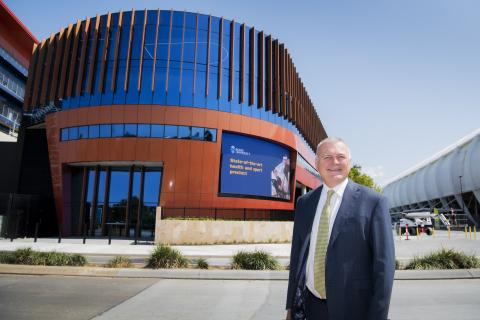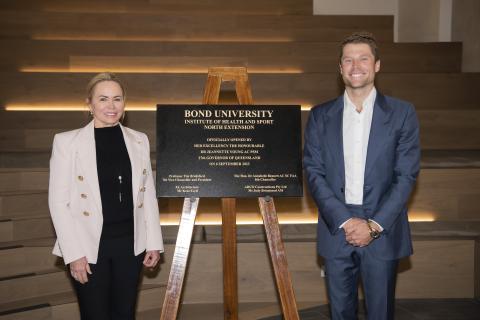
Bond University has unveiled a new precinct at Robina to prepare students for the anticipated boom in Australia’s care sector.
Allied health students at the new multi-level building will have access to 11,500m2 of education spaces, state-of-the-art training facilities, clinics and equipment. The tripling of the population aged over 85, projected in the federal government’s new Intergenerational Report, will drive demand for physiotherapists, exercise and sports scientists, dietitians and occupational therapists.
The project, built by ADCO Constructions, was self-funded by Bond University and created 200 jobs during construction and more than 50 highly-skilled, ongoing positions.
Governor of Queensland, Her Excellency the Honourable Dr Jeannette Young AC PSM, officially opened the precinct and praised the University’s investment in growing the nation’s health workforce.
“I'm sure all of you would agree with me that the value of a great education can never be underestimated. Nor can the importance of good health and the knowledge that accompanies it.”

Vice Chancellor and President Professor Tim Brailsford said the new facilities would enable Bond to train the future generation of allied health workers and do its bit to help alleviate workforce shortages.
“We know there’s a shortage of health workers at the moment and Queensland Health are predicting larger shortages in allied health,” he said.
"We see the additional training of students here being critical in solving some of the health crisis.”
ADCO’s Managing Director Neil Harding said the company was thrilled to partner with Bond University to deliver the project, continuing a long association with the University.
“We first worked with Bond University in 2004 completing the Health Science and Medicine Faculty Building. Since then, we have partnered to successfully build 24 facilities, establishing ADCO as the Builder of Choice.”
“Our involvement with Bond University extends much further than just construction, with many of our people providing mentoring to construction students and the ADCO Sports Excellence Scholarship providing benefit to over 25 students since 2009.”
The new building connects to the University’s existing Institute of Health and Sport building and doubles the current space for allied health programs.

Key features of the new facility include:
* A range of new clinical spaces, including simulated hospital wards and clinician consulting rooms to accommodate treatments in physiotherapy, nutrition, rehabilitation and occupational therapy
*Community clinics
* A world-class 60m gait laboratory that incorporates pressure sensors and high-speed cameras to analyse human movement. It can be used to assist everything from recovery and rehabilitation for age-related conditions to elite sports training.
* A rehabilitation gym.
* An indoor amphitheatre in an atrium designed to encourage innovation.
* Simulated residential settings to support research and education in occupational therapy.
* Commercially simulated kitchen facilities for nutrition and dietetic studies.
* An exterior design that complements the adjacent Cbus Super Stadium and adds to the overall presentation of the Robina precinct.
The design by XL Architecture prioritises natural light, airflow, and a range of environmentally sustainable initiatives including solar power.
